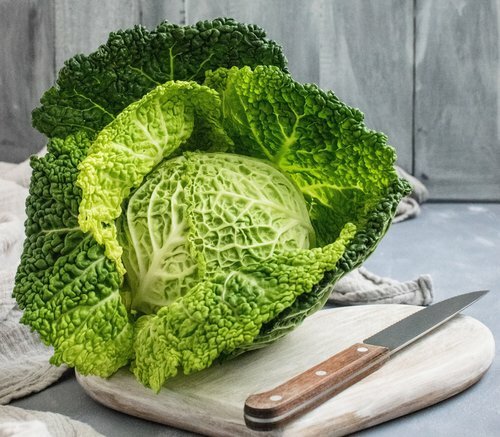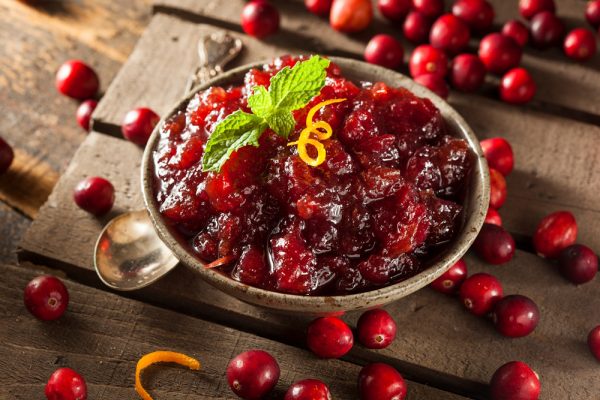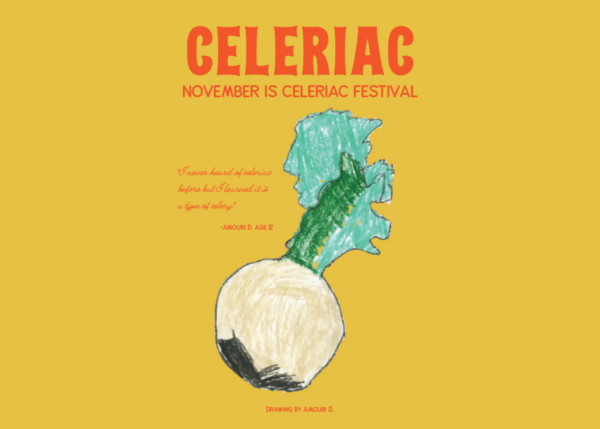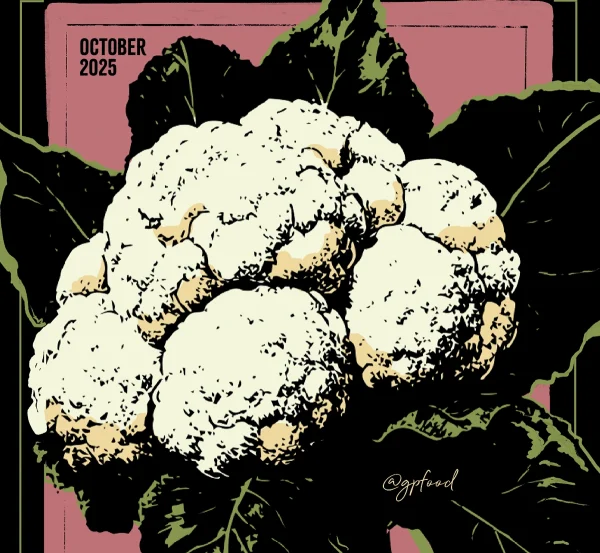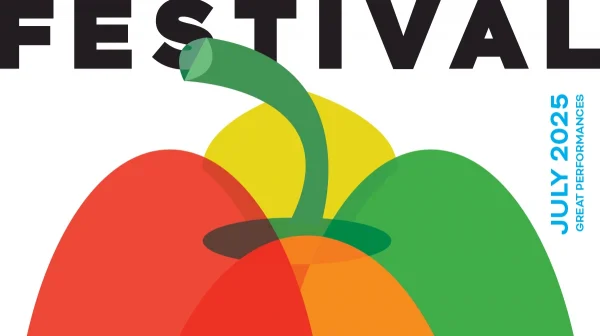At Great Performances, food is woven into every moment from a quick coffee break to a grand celebratory feast. We bring this belief to life through delicious food, warm hospitality, and boundless culinary creativity. At the heart of it all is our Chefs’ Choir℠ ensemble – a unique and diverse group of extraordinary chefs and cooks who power our catering, café, and restaurant services.
Through the Chefs’ Choir℠ ensemble, our chefs step beyond the kitchen to share their passion and expertise directly with you. They offer recipes to try at home, stories that inspire, insights into their craft, and tips to elevate your cooking. Whether you’re looking to recreate a signature dish, explore new techniques, or simply find fresh inspiration, the Chefs’ Choir℠ ensemble brings the artistry and creativity of Great Performances into your home, making every meal a celebration.
Our chefs share their culinary voices with stories and recipes that capture the Thanksgiving spirit.
Check out their delicious contributions – and let us know which ones you’ve tried!
Thanksgiving Recipes
Updated for the 2025 season
Each month, our Food Festival series celebrates a single seasonal ingredient through a chef-driven recipe, creative tips, and serving inspiration. Few ingredients are as tied to the spirit of November as cranberries. Tart, jewel-toned, and bursting with flavor, cranberries bring brightness to hearty autumn dishes and are a beloved staple of holiday feasts. From classic relishes to inventive sauces, this seasonal berry adds both tang and vibrancy to the table.
In honor of November cranberries, we’re spotlighting a timeless favorite: a chef-crafted Cranberry Sauce. Sweetened with honey, brightened with orange, and layered with warm spices and herbs, this sauce is perfect for pairing with roasted meats, serving alongside cheeses, or spooning over desserts.
Want more seasonal ideas? Explore the full Food Festival series here.
Ingredient Spotlight:
Cranberries are native to North America and thrive in cool climates, often harvested from bogs in the fall. Known for their sharp, tangy flavor, they are a nutritional powerhouse, rich in antioxidants and vitamin C. While fresh cranberries are typically in season from September through November, they preserve beautifully, making them a staple of holiday cooking.

Recipe: Cranberry Sauce
Ingredients
2 quarts cranberries
2 cups honey
¼ cup finely chopped shallots
2 cups white wine
1 cup orange juice
Zest of 1 orange
10 whole black peppercorns
1 cinnamon stick
8 whole cardamom pods
4 whole allspice berries
3 sage leaves
1 sprig tarragon
1 sprig parsley
Method
In a thick-bottomed pot, sweat shallots until translucent.
Add cranberries, honey, white wine, orange juice, and orange zest. Bring to a light simmer, stirring often to prevent scorching.
Place peppercorns, cinnamon, cardamom, allspice, sage, tarragon, and parsley in cheesecloth; tie with butcher’s twine to make a sachet.
Add sachet to the pot and simmer for up to 1 hour, until cranberries burst and sauce thickens. Stir frequently to prevent sticking.
Remove sachet and discard.
Chill cranberry sauce before serving. Store for up to 1 week.
Pro Tips from Our Chefs
Swap honey for maple syrup for a deeper, woodsy sweetness.
Add a splash of port or red wine for extra richness.
For a smoother sauce, press cranberries through a fine sieve after cooking.
Freeze extra sauce in ice cube trays — perfect for adding to pan sauces or cocktails later.
How to Use It: Serving Suggestions
Serve alongside roast turkey, chicken, or pork as a tangy counterpoint.
Pair with baked brie or sharp cheddar for a festive appetizer.
Stir into yogurt or oatmeal for a seasonal breakfast boost.
Use as a glaze for roasted vegetables.
Spoon over cheesecake or vanilla ice cream for a holiday-ready dessert.
From Our Farm to Your Table: Meet Katchkie Farm and Our CSA
The peppers in this month’s recipe—and many of the ingredients we spotlight—come straight from Katchkie Farm, our organic farm in Kinderhook, NY. It’s where we grow with intention: focusing on flavor, sustainability, and connection to the land.
Through our CSA (Community Supported Agriculture) program, you can enjoy the very best of the season each week—from just-picked produce to specialty pantry items and surprises from our kitchen.
Want a deeper connection to your food? Learn more about our CSA and Katchkie Farm →
Keep Cooking with Us
We’re cooking our way through the seasons—one ingredient at a time. Sign up for our newsletter to get each month’s recipe, tips, and art delivered to your inbox.
Get recipes, seasonal stories, and event tips delivered each month? Sign up for our newsletter →
At Great Performances, our mission is simple yet profound: to unleash joy with genuine hospitality. Every event we produce is more than just food and service — it’s a reflection of our ethos, our values, and our commitment to creating spaces where people can connect, dream, and share ideas. That’s why moments of recognition and gratitude, like the heartfelt note below, matter so much. They remind us of the deeper purpose behind what we do and how meaningful partnerships shape our work.
The following thank you note captures the spirit of our collaboration with Food Tank during Climate Week — a time when food, sustainability, and community came together in an extraordinary way. We’re honored to share it, because it reflects who we are, what we strive for, and the joy that hospitality can bring.
Lauren, Jenell, April and Liz,
I don’t have words to properly thank the four of you for last week.
Our partnership is truly one of the most special we have with anyone, anywhere.
Thank you for aligning so deeply with our values and sharing our vision. For co-creating a truly astonishing week of culinary experiences, programming, and culture that has no parallel at Climate Week. Thank you for not only embracing the wild ideas we bring your way, but for bringing us your own equally exciting ones to weave in. It’s a dream to have partners we trust so deeply, who are so interconnected with our goals.
I hope we’ll continue dreaming together creating even more events in New York City that bring both light and space for our food and agriculture movements to debate, share ideas, and organize in this (to put it mildly) challenging environment. Food Tank has become the big tent, a home for that, and it is in no small part thanks to you all for making every event we do here feel inviting, special, and like home. People say what makes our Climate Week events different was how much love, passion, and joy goes into every we co-curate. They see that in the care, thought, and mission that goes into every single bite of food that is served.
We threw a crazy week at you haha and honestly it just couldn’t have gone smoother. I realize that the days were long and hard and also in the middle of the High Holidays. Thanks for staying by our side unwaveringly through it all.
Onwards to the next one!
All our love,
Bernie, Dani, Elena and Kenzie
This note is more than gratitude — it’s a reflection of the kind of meaningful partnerships that drive us at Great Performances. We’re proud to co-create with Food Tank and grateful for the opportunity to help advance important conversations around food, agriculture, and sustainability.
Want to learn more? Read our other reflections on Food Tank here: The Magic of the Movement: Recapping Food Tank at Climate Week NYC 2025
Food Tank at Climate Week | Jerome L. Green Performance Space | Lauren Tregor, Senior Event Director
What a magnificent week! From September 21st through September 26th, the spirit of food and climate action converged in New York City, and we were absolutely thrilled to be a central part of the energy at Food Tank at Climate Week NYC 2025. Bringing together over 300 passionate leaders, celebrated chefs, dedicated farmers, and Broadway performers at WNYC-NPR Studios’ The Jerome L. Greene Performance Space was an experience nothing short of inspiring.
The atmosphere was one of palpable hope and urgent action, a vibrant reminder that the solutions to the climate crisis are already growing in our fields and flourishing in our kitchens.
A Taste of the Future: The Culinary Experience
The crucial conversations were fueled by incredible hospitality, courtesy of our partners. The receptions and meals throughout the week were a culinary reflection of the sustainable, high-quality food system we were celebrating. Guests enjoyed an array of exceptional bites and craft cocktails, featuring the very ingredients and producers central to the movement.
Attendees grazed on beautiful spreads, including a curated Cheese Board from Organic Valley and Niman Ranch Charcuterie. Lighter fare like fresh Crudité, savory Lobster Rolls, and Shrimp Cocktail offered a refreshing counterpoint to heartier dishes like Prosciutto-wrapped Dates with Niman Ranch Bacon. Standout items included the innovative Black Bean Taquitos from Sean Sherman and the elegantly prepared Forbidden Rice Pavé with Smoked Salmon, showcasing Lundberg Black Pearl Rice. The drinks were equally spirited, with guests sipping on sophisticated options like the Makers Mark Sour and the adventurous Bourbon Chamoy Cocktail.
Key Moments from the Stage
Hope, Regeneration, and Deliciousness
The week launched with the deeply moving, sold-out evening arts session: “Hope on a Plate: An Interactive Celebration of Regenerative Agriculture and Shared Possibility”. This multi-sensory journey brought regenerative farming to life, with ideas shared by luminaries like Chef Dan Barber and Whole Foods CEO Jason Buechel.
Later that week, the sold-out “Roadmap to a Delicious, Nutritious, and Regenerative Food Future for All” brought incredible visionaries like Chef Rasmus Munk and the essential voice of author Mark Bittman to the stage to sketch out the blueprint for a better system.
Broadway Meets the Backyard
The arts sessions were truly spectacular. Monday night’s arts session, “The Performing Arts Light the Way: A Climate Week Celebration,” featured the joy and activism of Pattie Gonia and the soaring talent of Grammy winner Tamika Lawrence.
We were also thrilled to premiere a special workshop reading of the new play, “Catalyst Coffee,” on Tuesday, pulling us into the human drama of the food system. A fascinating talkback with the celebrated investigative journalist Eric Schlosser made for a powerful and unforgettable close.
During a panel called “Chefs Change the World”, hosted by Food Tank and in partnership with the James Beard Foundation and Organic Valley, our founder, Liz, spoke about the power of connection and the deep need for it now. “Right now, the biggest job for us is finding those moments of hope. We have to see other people, we have to listen to them.”
Celebrating Our Stewards
The week was beautifully grounded in a profound respect for those who steward the land. Our sold-out Tuesday session, “Keeping Farmers on the Land,” celebrated the enduring work of farm communities with the indispensable perspective of Chef Alice Waters. We then closed the week with a heartfelt and well-deserved tribute at “A Night Honoring Our Farmers,” a wonderful final evening of storytelling.
The spirit of this landmark week—of collaboration, creativity, and deep commitment—will fuel our movement forward. Thank you to every speaker, performer, partner, and attendee who made Food Tank at Climate Week NYC 2025 such a resounding success.
Event Gallery
Event Menu
Every day at Food Tank 2025 started with nourishing staples and carried through with lunches, snacks, and receptions designed to bring people together. Here’s a look at the daily offerings that kept everyone fueled and inspired throughout the week.
Breakfast: Bakery basket, gluten-free/vegan pastries, parfaits, fresh berries, Forager Project yogurts (donated), Conagra peach cups (donated), coffee (Kiss the Ground, donated), milk & dairy (Organic Valley, donated)
Lunch: Packaged half sandwiches & wraps, rotating salads (wild rice, quinoa, orzo, greens), AFFI green beans (donated), Farmers Fridge assorted bowls (donated), Certified Origins olive oil & balsamic vinegar (donated)
Afternoon Break: Mozzarella sticks, rice crisps, Quinn snacks, FAVES candy, Babybel Plant-Based Cheese snacks (donated), Bear’s Fruit beverages (donated), protein balls
Reception: Cheese board, charcuterie, crudité with dips (Little Sesame hummus, Certified Origins pesto/artichoke dip, taralli crackers — donated), assorted crackers, passed hors d’oeuvres (Forbidden Rice Pave, Avocado Toast, Lobster Roll, Shrimp Cocktail, Fy Mushroom Bites)
Sunday (Sept 21)
Sticky Rice with Tuna Tartare
Huitlacoche Waffles with Salmon, Quail Eggs, Macha
Pureed Koginut Squash
Monday (Sept 22)
Black Bean Taquito (Sean Sherman)
Tuesday (Sept 23)
Brie & Green Apple Tea Sandwich
Cucumber & Watercress Tea Sandwich
Turkey Breast & Swiss Tea Sandwich
Wednesday (Sept 24)
Mushroom “Pulled Pork” Crostini
Mushroom Mix Burger Slider
Pork Meatball with Pasta Sauce
Tomato Gazpacho
Pineapple & Black Bean Salad
Oishii Berry Cake Bite
Thursday (Sept 25)
Irish Soda Bread with Cheddar
Ginger & Sesame Prawns
Tamari Ginger Tuna Poke
Tilapia Taco
Cloudy Donuts
Seaweed & Cucumber Salad
Vegetable Crudité (seasonal mix)
Prosciutto-Wrapped Dates with Gorgonzola
Friday (Sept 26)
Miniature Brownie
Assorted Mini Cookies (Oatmeal, Cappuccino, Chocolate Chip, Sweet Potato, Coconut Toffee)
OATLY Vanilla Ice Cream Cups
Kerry Dairy Protein Ball
Each month, our Food Festival series highlights a seasonal ingredient with a chef-driven recipe, pro tips, and serving ideas. For the October Food Festival, cauliflower takes center stage. Nutty, versatile, and nutrient-packed, cauliflower transforms beautifully when slow-simmered into a rich ragu with onion, rosemary, and butter. Perfect for tossing with pasta or spooning over grains, it’s a cozy dish that celebrates autumn’s harvest.
Want more seasonal ideas? Explore the full Food Festival series here.
Ingredient Spotlight:
Cauliflower is a cool-weather staple with a mild, nutty flavor that adapts to almost any cooking method—roasted, mashed, riced, or simmered into sauces. Beyond versatility, it’s packed with vitamin C, fiber, and antioxidants, making it as nourishing as it is delicious. This humble vegetable shines in hearty fall recipes, where slow cooking coaxes out its natural sweetness and transforms it into a velvety base for comforting meals.
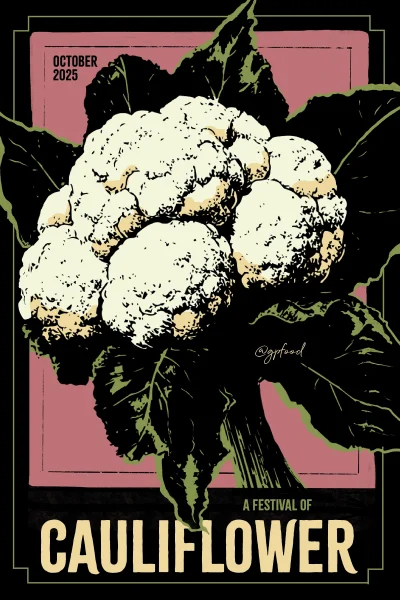
Recipe: Cauliflower Ragu
This month, our chefs feature cauliflower in a rustic Italian-inspired ragu. Slowly simmered with rosemary, onion, and butter, it breaks down into a velvety sauce that’s perfect for tossing with pasta or spooning over grains.
Ingredients
1 head cauliflower
1 medium Spanish onion, chopped fine
1 Tbsp chopped fresh rosemary
¼ tsp crushed red pepper
½ c soft butter
2 c water
1 Tbsp EVOO
salt to taste
Method
- Remove the bottom stem from the cauliflower and discard. Using a chef’s knife, cut the cauliflower head in half and place cut side down on the cutting board. Slice as thinly as possible and set aside while you prep other ingredients.
- Finely dice the onion and set aside. Remove the rosemary from its stem and chop finely. In a small rondo over medium heat, add EVOO and let it warm. Add the crushed red pepper and rosemary to perfume the oil. Once fragrant, add the onions and butter, stirring slowly until the onions become translucent.
- Add the sliced cauliflower and fold it into the mixture, allowing it to sweat. Add water and cover with a paper cartouche. Reduce the heat to low and allow to cook until the cauliflower begins to break down, about 1 hour. Season to taste and serve over your favorite pasta.
Pro Tips from Our Chefs
Choose the right cauliflower
Look for a firm head with tightly packed, creamy-white florets. Avoid any with soft spots or discoloration.
Slice it thin
The thinner the cauliflower slices, the quicker they’ll break down into a sauce-like consistency, giving you a rich, velvety ragu.
Don’t skip the cartouche
Covering the pan with parchment (a cartouche) helps the cauliflower steam gently and prevents it from drying out.
Make it ahead
This ragu tastes even better the next day as the flavors meld. Store in the fridge for up to four days.
How to Use It: Serving Suggestions
Toss with tagliatelle or pappardelle for a rustic pasta night.
Spoon over creamy polenta for a hearty vegetarian main.
Pair with roasted chicken or grilled sausages for a comforting fall meal.
Add a sprinkle of Parmesan or toasted breadcrumbs on top for extra texture.
From Our Farm to Your Table: Meet Katchkie Farm and Our CSA
The peppers in this month’s recipe—and many of the ingredients we spotlight—come straight from Katchkie Farm, our organic farm in Kinderhook, NY. It’s where we grow with intention: focusing on flavor, sustainability, and connection to the land.
Through our CSA (Community Supported Agriculture) program, you can enjoy the very best of the season each week—from just-picked produce to specialty pantry items and surprises from our kitchen.
Want a deeper connection to your food? Learn more about our CSA and Katchkie Farm →
Keep Cooking with Us
We’re cooking our way through the seasons—one ingredient at a time. Sign up for our newsletter to get each month’s recipe, tips, and art delivered to your inbox.
Get recipes, seasonal stories, and event tips delivered each month? Sign up for our newsletter →
Halloween with Great Performances
At Great Performances, Halloween isn’t just a holiday—it’s a creative season. Each October, our team transforms private venues, ballrooms, and rooftops across New York City into hauntingly elegant experiences for our clients, filled with imaginative menus, moody décor, and unforgettable moments. We love this time of year because it embodies what we do best: crafting events that engage all the senses and spark joy through creativity.
But we’re not the only ones celebrating. Our partner venues—New York’s most iconic cultural institutions—are bringing their own magic to the season with concerts, family festivals, film screenings, and art experiences that capture the spirit of Halloween and beyond. Whether you’re looking for a family-friendly celebration, a night of cinematic chills, or a creative way to honor Día de los Muertos, there’s something happening for everyone this October.
Here are some of our favorite Halloween events in New York City for 2025, hosted by our partner venues, that we can’t wait to share.
Asia Society
Asia Society: Zinda Laash (The Living Corpse)
When: October 31, 2025
Where: Asia Society
If you’re a fan of classic horror with a cultural twist, Asia Society’s screening of Zinda Laash (The Living Corpse) is a must-see this Halloween. Originally released in 1967, this cult favorite holds the distinction of being Pakistan’s first-ever horror film—and its first film to receive an adult certification for its eerie themes and groundbreaking imagery.
The film follows a mad scientist whose experiments go horribly wrong, turning him into a bloodthirsty vampire. Blending Gothic horror, melodrama, and surreal cinematography, Zinda Laash pays homage to Dracula while carving out its own haunting legacy in South Asian cinema.
Asia Society’s screening of this rarely seen classic offers both chills and insight into the region’s cinematic history. It’s a perfect way to spend Halloween night—immersed in suspense, artistry, and international film heritage.
BAM
BAM: BAMboo! (Halloween Family Festival)
When: October 31, 2025
Where: BAM
Every Halloween, the Brooklyn Academy of Music transforms into a community hub for spooky fun with BAMboo!. This annual block party is designed for families and children, creating a safe and lively space to celebrate the holiday in style.
Expect carnival games, candy giveaways, music, and plenty of arts and crafts activities. Little ghouls and goblins can show off their costumes in a festive parade, while parents can enjoy the vibrant neighborhood energy that BAM is known for. It’s a beloved community tradition that captures the joy of Halloween without the scares—making it perfect for kids of all ages.
If you’re looking for an afternoon celebration before trick-or-treating kicks off, BAMboo! is the place to be.
BAM: Folklore Film Series – The Wolf House, Viy & The White Reindeer
When: October 31, 2025
Where: BAM
If you prefer your scares on the big screen, BAM’s Folklore Film Series offers a chilling journey through international tales of myth, magic, and the macabre. This trio of haunting films dives into the darker corners of folklore, blending artistry with eerie storytelling that lingers long after the credits roll.
The series begins with The Wolf House, a mesmerizing stop-motion nightmare inspired by Chile’s most unsettling historical myths—where a young girl seeks refuge in a mysterious house that slowly consumes her. Viy, the first Soviet horror film, brings to life a 19th-century Russian tale about a seminarian forced to guard the coffin of a witch for three terrifying nights. And The White Reindeer, a Finnish classic, tells the story of a lonely woman who transforms into a vampiric reindeer after a shaman’s spell—both beautiful and haunting in equal measure.
Together, these films weave a global tapestry of fear, folklore, and fantasy. Perfect for cinephiles seeking something more sophisticated than jump scares, BAM’s Halloween lineup proves that true horror lies in the imagination.
Dizzy's Club at Jazz at Lincoln Center
Dizzy’s Club: Stephane Wrembel – Django New Orleans CD Release
When: October 31, 2025
Where: Dizzy’s Club at Jazz at Lincoln Center
End your Halloween night on a high note at Dizzy’s Club, where world-renowned guitarist Stephane Wrembel—best known for his work inspired by Django Reinhardt—takes the stage for the release of his new album, Django New Orleans.
Wrembel, a virtuoso of Gypsy jazz, brings together the rhythmic pulse of New Orleans with the improvisational magic of Django’s sound, creating a concert that’s both soulful and electrifying. Joined by a stellar lineup of musicians, this performance promises a vibrant evening of swing, spirit, and spontaneity—all with a Halloween-night edge that’s more enchanting than eerie.
Sip a cocktail, take in the skyline views, and let the music transport you—it’s the perfect sophisticated finale to a day of festive fun across New York.
Poster House
Poster House: Halloween Mask Printing with Mike King
When: October 27, 2025
Where: Poster House
For those who like their Halloween with a dose of artistry, Poster House offers a hands-on workshop that’s as creative as it is festive. Designer Mike King leads a special Halloween Mask Printing session, teaching participants how to screen-print bold and spooky designs inspired by the museum’s collection of iconic posters.
The best part? You leave with a one-of-a-kind mask of your own creation, perfect for wearing to your Halloween festivities. This event bridges history, design, and seasonal fun, giving adults and teens the chance to flex their creativity while celebrating the holiday.
It’s Halloween with a stylish, DIY twist—where art and costume collide.
Wave Hill
Wave Hill: Wave Hill-O-Ween
When: October 26, 2025
Where: Wave Hill
Set against the breathtaking backdrop of the Hudson River, Wave Hill-O-Ween is a celebration that blends nature, family, and seasonal festivity. The gardens come alive with Halloween activities tailored for children and families, including trick-or-treating around the grounds, craft workshops, and storytelling sessions.
Unlike crowded city parades, Wave Hill offers a tranquil, scenic setting that makes the holiday feel both magical and intimate. Families can wander the fall foliage, explore the grounds, and then gather for crafts or performances that highlight the joy of the season.
It’s a chance to celebrate Halloween surrounded by beauty and nature, while still enjoying all the festive touches kids love.
Wave Hill: Day of the Dead / Día de los Muertos
When: November 1 – 2, 2025
Where: Wave Hill
As Halloween fades, the celebration continues at Wave Hill with two beautiful events honoring Día de los Muertos (Day of the Dead)—a time to remember loved ones and embrace the vibrant traditions of Mexican culture.
On November 1, visitors can experience Day of the Dead / Día de los Muertos, featuring community altars, live performances, and opportunities to learn about the meaning behind this centuries-old observance. Families can also take part in the Family Art Project: Day of the Dead, where children and adults collaborate on colorful paper marigolds, sugar-skull–inspired crafts, and other creative tributes that celebrate life, love, and memory.
Set against the serene backdrop of Wave Hill’s gardens overlooking the Hudson River, these events offer a joyful, reflective way to close out the Halloween season—reminding us that remembrance can be just as beautiful as revelry.
A Halloween to Remember
Halloween is a time for transformation, and no city does it quite like New York. From mask-making and block parties to chilling film screenings and soulful jazz performances, our partner venues prove that the spirit of the season thrives in every corner of the city.
At Great Performances, we’re proud to support these institutions as their exclusive caterer—and to draw inspiration from their creativity as we design private events that reflect the same sense of wonder and artistry. Whether you’re attending a Halloween concert, taking your kids to a family festival, or honoring loved ones at a Día de los Muertos celebration, we hope this season fills you with joy, imagination, and a touch of spooky delight.
Wishing you a deliciously magical Halloween, from all of us at Great Performances.
At Great Performances, our story began as a waitress service for women in the arts. Today, we are proud to be the exclusive caterer for New York’s most iconic cultural institutions. These venues don’t just host events—they create meaningful, culturally significant experiences that enrich our city. Each month, we share some of the programs we’re most excited about. Here’s what’s happening in October 2025.
Apollo Theater
- Apollo Comedy Club – October 9, 2025
A night of laughs with some of the city’s best up-and-coming stand-up comedians in Harlem’s legendary theater. - Amateur Night at the Apollo – October 10, 2025
Cheer on emerging talent and experience the high-energy tradition that launched countless careers. - Amateur Night at the Apollo – October 11, 2025
Another chance to see rising stars take the stage in one of New York’s most iconic live competitions. - Melanin Madness
A celebration of culture and creativity, highlighting artists of color with powerful performances. - Bricks
A moving production that combines music and narrative to tell stories rooted in Harlem and beyond.
Asia Society
- 2025 Asia Game Changer Awards and Dinner
Celebrate global leaders making transformative contributions to communities worldwide at Asia Society’s signature annual event. - Setan Jawa: Silent Film with Live Music
Experience Garin Nugroho’s haunting Indonesian silent film brought to life with a live gamelan orchestra and Western instruments. - On Healing Land, Birds Perch: Healing from the Trauma of the Vietnam War
A powerful film screening and discussion reflecting on the resilience and healing of communities shaped by the Vietnam War. - Diwali Lights at Asia Society 2025
Celebrate the Festival of Lights with music, dance, and activities for the whole family, honoring South Asian traditions.
BAM
- BAMboo! (Halloween Family Festival)
A family-friendly Halloween block party filled with costumes, candy, arts & crafts, and music for all ages. - What Is War
A multimedia performance by Eiko Otake and Wen Hui exploring memory, trauma, and the aftermath of war through movement, video, and voice. - Martha@BAM — The 1963 Interview
A rare staged re-creation of Martha Graham’s 1963 interview at BAM, featuring performances that highlight her groundbreaking influence on modern dance. - The Met: Live in HD
Enjoy world-class opera performances broadcast live from the Metropolitan Opera stage to BAM’s big screen. - Best of BAMkids Film Festival
Kid-friendly short films from around the globe return in this festival highlight designed for young audiences and families.
Brooklyn Museum
- First Saturdays
A Brooklyn tradition: enjoy free art, performances, and community programs at the museum’s lively after-hours event. - Fall Fête: Monet and Venice and Seydou Keïta – October 9, 2025
Celebrate the openings of two major exhibitions with an evening of art, music, dance, and special after-hours gallery access. - Brooklyn Symphony Orchestra: Adams, Roussel, Sachse, Strauss – October 26, 2025
The Brooklyn Symphony Orchestra performs a program featuring works by John Adams, Albert Roussel, Ernst Sachse, and Richard Strauss. - Brooklyn Pop-Up Market:
October 5,
October 12,
October 19,
October 26
Browse artisan vendors, food, and unique gifts at this vibrant community marketplace. - Upcoming Exhibitions:
Everyday Rebellions (dates TBD),
Seydou Keïta (opens October 10, 2025),
Monet in Venice (October 11, 2025–February 1, 2026)
Explore groundbreaking exhibitions spanning photography, resistance movements, and Impressionist masterpieces.
Dizzy’s Club
- New Orleans Jazz Orchestra – October 16, 2025
Celebrate the spirit of New Orleans with the Grammy Award-winning Jazz Orchestra bringing soulful, high-energy performances to Dizzy’s Club. - Ertegun Jazz Hall of Fame: Celebrating Joe Henderson – October 21, 2025
A tribute to legendary saxophonist Joe Henderson, featuring outstanding jazz artists honoring his enduring legacy. - Event Title TBD – October 25, 2025
Details forthcoming; another world-class jazz performance at Dizzy’s Club. - Event Title TBD – October 28, 2025
An evening of top-tier live jazz in the intimate setting of Dizzy’s Club.
Jazz at Lincoln Center
- Abdullah Ibrahim: Life of a Legend – October 3–4, 2025
A celebration of pianist Abdullah Ibrahim’s extraordinary career, featuring Terence Blanchard, Kenny Garrett, Cecil McBee, and Ekaya. - Family Concert: Who is Celia Cruz? – October 5, 2025
A fun, educational concert introducing families to the Queen of Salsa, Celia Cruz, through storytelling and music. - Celia Cruz: A Centennial Celebration – October 17–18, 2025
A vibrant tribute to Celia Cruz’s legacy, honoring her powerful voice and contributions to Afro-Cuban music. - Nduduzo Makhathini and the Music of Bheki Mseleku with the JLCO & Wynton Marsalis – October 24–25, 2025
Pianist Nduduzo Makhathini joins Wynton Marsalis and the JLCO to honor South African jazz master Bheki Mseleku.
Platform by JBF
- Cocktail Class: Art of the Brine with Raines Law Room & Dear Irving
A hands-on cocktail-making experience highlighting brines, pickles, and bold flavor pairings. - Collab Dinner: Diwali Party
Celebrate Diwali with an evening of festive food, drinks, and community in a one-of-a-kind dinner collaboration. - Midwestern Harvest Dinner with James Beard Award Winner Karyn Tomlinson
Enjoy a seasonal feast prepared by James Beard Award winner Karyn Tomlinson, inspired by Midwestern harvest traditions.
New York Historical
- Exhibition: The Gay Harlem Renaissance
Explore the overlooked contributions of LGBTQ+ artists and writers to Harlem’s cultural flowering of the 1920s and ‘30s. - Exhibition: You Should Be Dancing: New York, 1976
Step into the disco era and relive the music, fashion, and nightlife that defined a generation. - Blacklisted Movie Night: The Postman Always Rings Twice (1946) – October 3, 2025
Revisit a film noir classic and explore its ties to the Hollywood blacklist era. - Gallery Tour: Dining in Transit – October 16, 2025
A curator-led tour examining New York’s transit dining culture and its evolution through time.
Poster House
- Current Exhibitions:
The Future Was Then: The Changing Face of Fascist Italy,
Blazing a Trail: Dorothy Waugh’s National Parks Posters
Explore the power of design in shaping political, cultural, and environmental narratives. - Halloween Mask Printing with Mike King
Create your own custom Halloween mask with renowned designer Mike King in this hands-on workshop. - Third Sunday: Always Free
Enjoy free admission and special activities as part of Poster House’s monthly community day. - Posters & Cocktails: Italian Fascism
A unique evening blending history, mixology, and design with cocktails inspired by the current exhibition. - Designed to Control: Authoritarian Branding of the 20th Century
A thought-provoking program examining the role of posters in shaping authoritarian regimes’ public image.
Wave Hill
- Fiesta on the Hudson
Celebrate Latino heritage and culture with live music, dance, and family-friendly activities overlooking the Hudson River. - Indigenous Peoples Weekend
Join special programs honoring the history, culture, and contributions of Indigenous communities. - Clay Pot Meals and the Native American Palate
Discover Native American culinary traditions in a cooking demonstration highlighting heritage and flavor. - Wave Hill-O-Ween
A Halloween celebration for families featuring costumes, crafts, and seasonal fun in the gardens.










